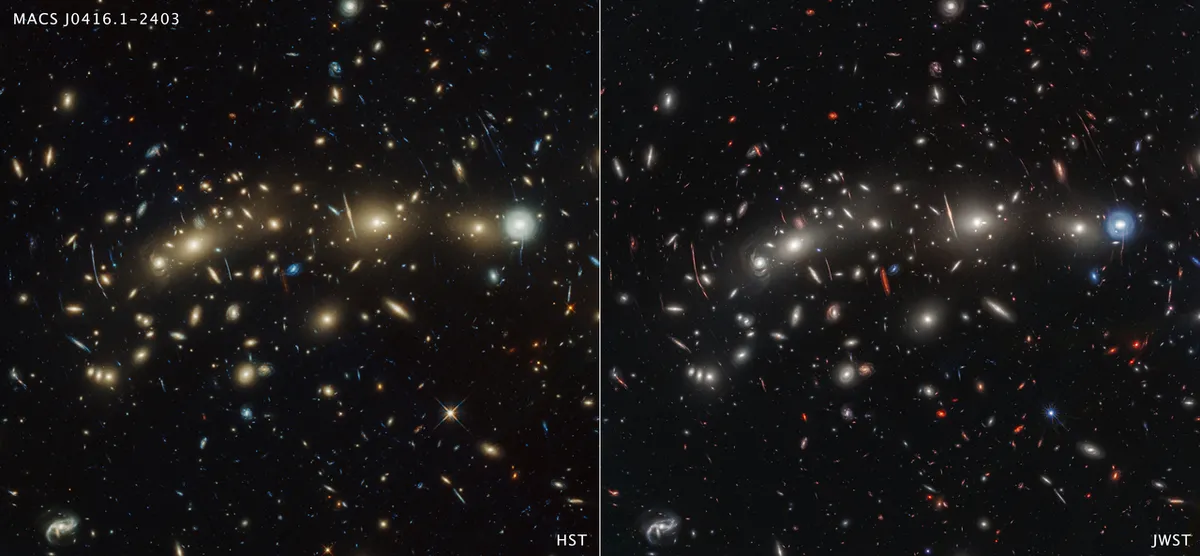Prior to the launch of the James Webb Space Telescope, many had referred to it as Hubble's successor, but a new image of the deep cosmos shows how the two space observatories can achieve something magical when their observing power is combined.
Webb and the Hubble Space Telescope have both been studying galaxy cluster MACS0416, and the result is a colourful, penetrating view of a massive collection of galaxies bound by gravity 4.3 billion lightyears away.
The observations are being used by astronomers to discover more about stars that would otherwise be invisible, and supernovae magnified by the gravity of larger celestial objects.
This panchromatic image is a combination of visible light and infrared light, taking original observations that are part of Hubble's Frontier Fields programme and boosting them with Webb's infrared capabilities.

Colours of the Christmas Tree Galaxy Cluster explained
Different wavelengths of light in the image have been colour coded during image processing: the shortest are blue, the longest red, and intermediate wavelengths green.
This reveals a plethora of nearby and distant galaxies within the same view.
And because light from those galaxies has been colour-coded, we can identify blue galaxies as being those closest to Earth, bursting with star formation.
Red galaxies are more distant, some of which contain masses of dense cosmic dust that absorbs bluer colours.
While Hubble is best at detecting closer, bluer stars, Webb's infrared vision is required to penetrate through that cosmic dust and reveal the redder stars.
The colourful nature of the image has even resulted in a new nickname being applied to the cluster: the Christmas Tree Galaxy Cluster (not to be confused with the Christmas Tree Cluster!).

Science behind the image
"We are building on Hubble’s legacy by pushing to greater distances and fainter objects," says Rogier Windhorst of Arizona State University, principal investigator of the PEARLS program (Prime Extragalactic Areas for Reionization and Lensing Science), which captured the Webb data.
This Webb data constitutes 3 observations taken weeks apart, and a fourth from the CANUCS (CAnadian NIRISS Unbiased Cluster Survey) research team.
The aim was to search for objects that vary in observed brightness over time, known as transients.
14 transients have been identified so far across the field of view.
12 of these have been located in 3 galaxies that have been magnified by gravitational lensing.
This is a phenomenon predicted by Einstein in which light from a distant galaxy is distorted and magnified by the gravity of a closer foreground galaxy
The 12 identified transients are likely to be individual stars or multiple star systems, while the remaining 2 are more likely to be supernova: exploded stars.
“We’re calling MACS0416 the Christmas Tree Galaxy Cluster, both because it’s so colorful and because of these flickering lights we find within it. We can see transients everywhere,” says Haojing Yan of the University of Missouri in Columbia, lead author of one paper describing the scientific results.
What's more, locating this many transients in observations spanning a relatively short time means astronomers may be able to find additional transients in this cluster and others through regular Webb observations.
It seems that for observers of transient phenomena, Christmas has certainly come early.
You can read the science papers behind this release at arxiv.org/abs/2307.07579 and doi.org/10.1051/0004-6361/202347556
